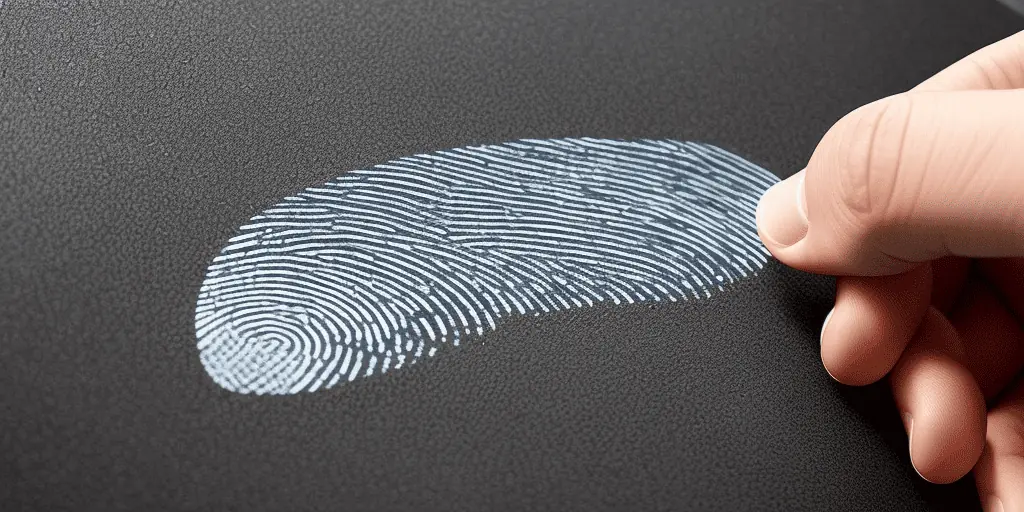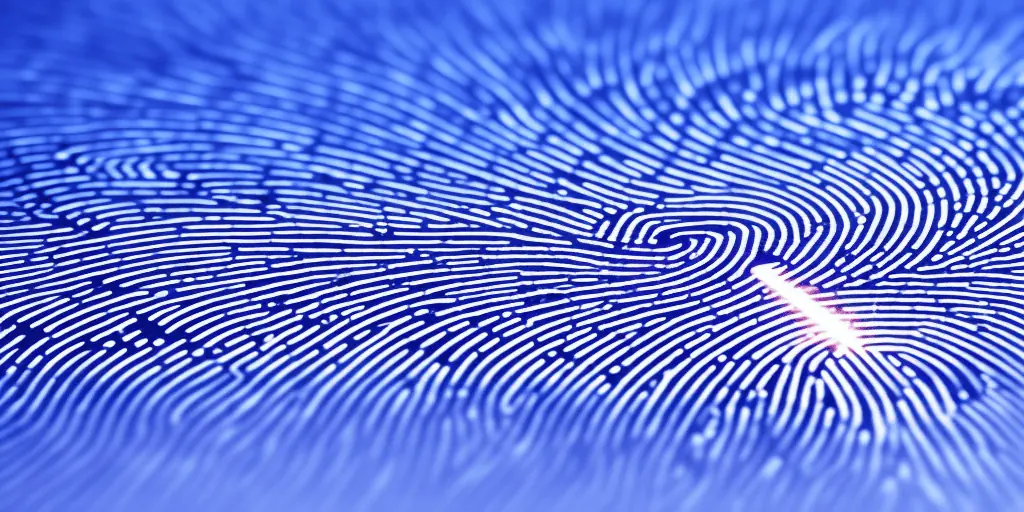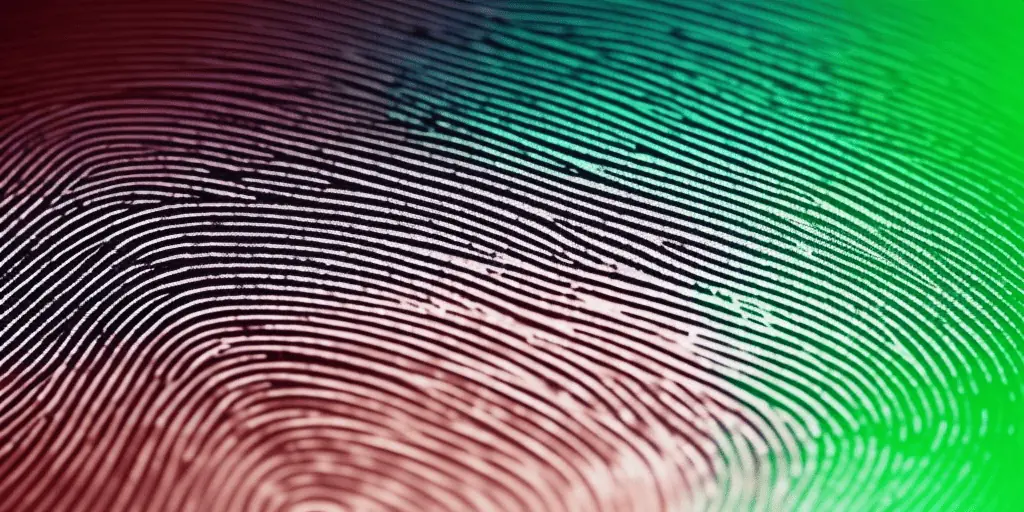Fingerprint authentication is a widely used biometric authentication method that allows individuals to secure their devices and applications using their unique fingerprint. This article will explore how fingerprint authentication works, its benefits and drawbacks, and its applications in various industries.
Introduction to Biometric Authentication
In today’s digital age, where data breaches and identity theft are becoming increasingly common, traditional methods of password-based authentication are no longer considered secure. Biometric authentication provides a more reliable and secure alternative by using unique physical or behavioral characteristics to verify the identity of an individual. This ensures that only authorized users gain access to sensitive information or resources.
What Is Biometric Authentication?
Biometric authentication is a method of verifying the identity of an individual based on their distinct physical or behavioral characteristics. This authentication method utilizes biometric data, which includes characteristics such as fingerprints, facial features, voice patterns, and iris patterns. These unique features are captured and analyzed to create a biometric template, which is then used for future identification or verification purposes.
Understanding Fingerprint Authentication
Fingerprint authentication, also known as fingerprint scanning or verification, is a common type of biometric authentication method that uses an individual’s unique fingerprint pattern to authenticate their identity. It is widely used in smartphones, laptops, access control systems, and many other applications.
How Does Fingerprint Authentication Work?
Fingerprint authentication works by capturing an individual’s fingerprint image using a fingerprint scanner or sensor. The scanner captures the intricate details of the fingerprint, such as the ridges and valleys, and converts it into a digital representation. This digital image is then compared to the stored biometric data for identification purposes.
The process begins with the individual placing their finger on the scanner. The scanner emits a series of light-sensitive diodes that illuminate the finger and create a high-resolution image. The ridges and valleys of the fingerprint block or reflect the light, creating a unique pattern. The scanner captures this pattern and converts it into a binary code.
The captured fingerprint image is then compared to the stored biometric data in the authentication system. The system analyzes the unique features of the fingerprint, such as the location and angles of the ridges, to determine if there is a match. If the fingerprint matches the stored data, the individual is granted access. If not, access is denied.
One of the advantages of fingerprint authentication is its speed and accuracy. The process of capturing and comparing fingerprints can be done in a matter of milliseconds, providing a seamless user experience.

Comparison and Authentication
Comparison and Authentication
In the process of fingerprint authentication, the captured fingerprint image is compared to a database of pre-stored fingerprint patterns. The database stores the same biometric information that was captured during the initial enrollment process.
During authentication, the system compares the unique characteristics of the captured fingerprint image to the stored patterns in the database. This comparison is done by matching specific features of the fingerprint, such as ridge endings, bifurcations, and other minutiae points. The system then calculates a similarity score, indicating how closely the captured fingerprint matches the stored data.
If the similarity score exceeds a certain threshold value, the authentication system confirms the match and grants access to the authenticated individual. However, if the similarity score falls below the threshold, the system denies access, as there may be insufficient evidence to confirm the identity.
This comparison and authentication process ensures that only authorized individuals can gain access to the protected system or resource.
Benefits and Drawbacks of Fingerprint Authentication
What Are the Benefits of Fingerprint Authentication?
Fingerprint authentication offers several advantages compared to traditional password-based authentication methods. Some of the key benefits include:
- Enhanced Security: Fingerprint authentication provides a higher level of security since each fingerprint is unique and difficult to forge.
- Convenience: Fingerprint authentication eliminates the need to remember complex passwords or carry physical tokens. Users can easily authenticate themselves by placing their finger on the scanner.
- Speed and Efficiency: Fingerprint authentication is quick and efficient, ensuring a seamless user experience.
What Are the Drawbacks of Fingerprint Authentication?
Despite its many benefits, fingerprint authentication also has some drawbacks:
- Privacy Concerns: Some individuals may have concerns about the storage and use of their biometric data, although modern encryption techniques are used to protect this sensitive information.
- False Acceptance and Rejection Rates: Fingerprint authentication systems are not perfect and can occasionally produce false acceptance or rejection results. This can be caused by factors such as variations in finger placement, skin conditions, or the quality of the fingerprint scanner.
Using Multimodal Biometric Authentication
What Is Multimodal Biometric Authentication?
While fingerprint authentication is a popular and widely used method, it can be further enhanced by combining it with other biometric authentication methods. This approach, known as multimodal biometric authentication, involves using multiple biometric modalities, such as fingerprints, facial recognition, voice recognition, or iris scanning, to verify an individual’s identity.
Multimodal biometric authentication provides an added layer of security as it requires multiple biometric traits to be verified. This significantly reduces the risk of false acceptance or rejection and enhances the overall accuracy and reliability of the authentication process.
Examples of Fingerprint Authentication Use Cases
Biometric Authentication Use Cases
Fingerprint authentication is widely used in various industries and applications. Some examples of fingerprint authentication use cases include:
-
Smartphones and Laptops: Many smartphones and laptops are equipped with fingerprint scanners, allowing users to unlock their devices and secure their personal information.
-
Access Control Systems: Fingerprint authentication is commonly used in access control systems, providing secure entry to restricted areas.
-
Time and Attendance Tracking: Employers use fingerprint authentication to accurately track employee attendance and prevent time theft.
-
Travel and Hospitality: Biometric authentication in the form of fingerprint scanners, iris scanners, and facial recognition can help airports verify passenger identity and make the journey through airports more seamless.
-
Healthcare: Biometric authentication can help hospitals confirm the patient’s identity, ensure caregivers have access to the right medical information, and more.
-
Law Enforcement and Public Security: Biometric authentication can be used for criminal/suspect identification and public security.
-
Financial Institutions: Biometric authentication can be used for client identification in financial institutions.
-
KYC Identity Proofing: Biometric authentication can be used for Know Your Customer (KYC) identity proofing.
-
E-Signing: Biometric authentication can be used for secure electronic signing.
FAQs
Q: How does fingerprint authentication work?
A: Fingerprint authentication is a biometric authentication method that uses a person’s unique biological feature – their fingerprint – to verify their identity. It is a form of biometric identification and is considered one of the most secure methods of authentication.
Q: What is biometrics?
A: Biometrics is a field of technology that involves the measurement and analysis of a person’s unique physical or behavioral characteristics, such as fingerprints, iris patterns, or voice recognition. It is used as a means of identity verification and is often used in conjunction with other authentication methods.
Q: How does fingerprint authentication compare to a password?
A: Fingerprint authentication is a more secure method of authentication compared to using a password. While passwords can be easily forgotten, shared, or stolen, fingerprints are unique to each individual and cannot be easily replicated.
Q: How does fingerprint authentication work on mobile devices?
A: Mobile devices that use biometrics, such as smartphones and tablets, have built-in fingerprint sensors. When a user wants to access a system or app, they place their finger on the sensor, and the device compares their fingerprint against a previously stored template in its database. If there is a match, the user is granted access.
Q: Is fingerprint authentication the only form of biometric authentication?
A: No, there are various forms of biometric authentication, including iris recognition, voice recognition, and facial recognition. Each method uses a different kind of biometric data to verify a person’s identity.
Q: How does fingerprint authentication protect against phishing attacks?
A: Fingerprint authentication adds an extra layer of security by requiring the user to physically present their fingerprint to access a system. This makes it much more difficult for attackers to impersonate someone else’s fingerprint and gain unauthorized access to their digital identities.
Q: Can a fingerprint authentication system be hacked?
A: While no authentication method is completely foolproof, fingerprint authentication is considered more secure compared to traditional password-based methods. The unique nature of fingerprints makes it difficult for hackers to replicate or forge them.
Q: Can two individuals have the same fingerprint?
A: It is highly unlikely for two individuals to have the same fingerprint pattern. The probability of two fingerprints being identical is extremely low, making fingerprint authentication a reliable method of identification.
Q: Is fingerprint authentication better than using a password?
A: Fingerprint authentication offers a higher level of security and convenience compared to traditional password-based authentication methods. It eliminates the need to remember complex passwords and provides a more reliable means of verifying an individual’s identity.
Q: Can fingerprint data be stolen?
A: Fingerprint data is typically stored in an encrypted format, making it difficult for unauthorized individuals to access or steal. However, it is essential to ensure that proper security measures are in place to protect this sensitive information.
Q: Can fingerprint authentication work without an internet connection?
A: Fingerprint authentication systems can operate offline, as the biometric data is stored locally on the device or within the authentication system. This allows for secure and reliable authentication even in environments without internet connectivity.
Q: How long does it take to go through a fingerprint authentication process?
A: Fingerprint authentication is generally a quick process. It only takes a few seconds for the device to capture and compare the fingerprint data, allowing the user to access the system or app efficiently.
Q: Is biometric information stored in a database?
A: Yes, when a person sets up fingerprint authentication, their fingerprint data is stored in a secure database on their device. The data is encrypted and cannot be easily accessed by malicious individuals.
Q: How is fingerprint authentication different from other biometric authentication methods?
A: Fingerprint authentication is just one of the many biometric authentication methods available. It uses the unique patterns and ridges on a person’s fingertips to verify their identity, while other methods, such as iris recognition or facial recognition, rely on different physical features.
Q: How is blockchain used in biometric authentication?
A: Blockchain authentication refers to the use of blockchain technology to verify and authenticate biometric information. It provides a decentralized and secure method of storing and managing biometric data, which enhances the security and reliability of biometric authentication systems.
Conclusion
In conclusion, fingerprint authentication is a reliable and secure method of identity verification. By analyzing the unique patterns and characteristics of an individual’s fingerprint, this technology ensures that only authorized individuals can access their personal devices and accounts.
The process begins by scanning the fingertip using a sensor that captures the ridges and valleys in the skin. This data is then converted into a digital template that is stored securely within the device’s memory. When authentication is required, the device compares the fingerprint presented with the stored template to determine if there is a match. This comparison is made by analyzing specific points, such as ridge endings and bifurcations, on the fingerprint. If the patterns on the presented fingerprint align with the stored template, access is granted. Otherwise, access is denied.
Fingerprint authentication provides a convenient and efficient way to protect sensitive information, as it is unique to each individual and difficult to replicate. As technology advances further, we can expect fingerprint authentication to continue playing a crucial role in securing our digital lives.


